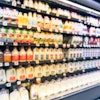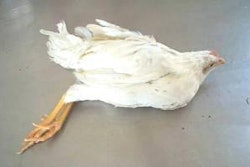
French egg production is expected to see a significant improvement this year, following a difficult 2009.
French table egg production was down by 4.8% to 10,226 million eggs in the first nine months of 2009, compared to the same period the previous year. Hatching eggs remained stable, registering a 2% rise in the third quarter of the year. According to the French Ministry of Agriculture and the French Customs Office, pullet placements recorded a 9% increase to 39 million birds over the period. In October alone, placements are believed to have rocketed by 32% to 4.1 million head. Non-official wholesale egg prices also registered a significant rise at just over Euro 7/100, thus recovering to the levels reached in late 2008.
Foreign trade
French imports of table eggs reached Euro 34.5 million in the first half of 2009, which exceeded national exports (Euro 23.3 million) and caused the foreign trade deficit to reach 12.2 million euros, from 7.9 million euros in 2008, reports the French poultry farming technical institute (ITAVI).
Table 1: French trade in table eggs & albumen Jan-June 2009
Exports to the UK and Belgium plummeted, while to the Netherlands, Germany and Switzerland they improved. Imports registered strong growth, mostly from Spain, which made up 64% of total French imports, followed by Belgium, Italy and Poland.
Yolk and albumen imports and exports were down in the first six months of 2009, with the national trade balance reaching Euro 21.9 million, compared with Euro 22.9 million a year earlier. Both imports and exports of liquid yolk and albumen for food use declined, resulting in a deficit of 1,170 tons, which was however less than the 1,700 tons recorded during the same period in 2008. While imports of dry yolk and albumen fell, exports rose by 2%, despite a drop in albumen exports, the ITAVI stresses.
In value terms, Germany was France’s biggest market for processed eggs, followed by the UK, Belgium and Spain. These four countries made up 62% of total French exports. Sales to Switzerland also increased. The Asian market accounted for 7% of French yolk and albumen exports (down from 8% in 2008). Spain was France’s main supplier (up by 1% to 29% of the country’s total imports of egg products), ahead of the Netherlands, Italy and Belgium.
Market trends
Following a period of growth in the 1990s with production reaching some 16 billion eggs in 1999, the French egg market is now declining, despite a significant increase in 2004-2005 and a slight recovery in 2008, the ITAVI says.
Table 2: French egg production Jan-Sep 2009
Production has become more diversified since the late 1980s. Laying hens reared in non-cage systems accounted for 8.2 million birds, or 18.7% of France’s total laying flock in 2008. Of these non-cage layers, 1.7 million were organically-reared, 1.6 million were Label Rouge birds, i.e. free-range with additional quality criteria, 3.6 million were free-range and 1.3 were floor layers. The most dynamic sectors are Label Rouge and organic eggs, where annual growth rates have reached 4% and 2.6%, respectively, over the last five years.
The French market is characterised by the predominance of free-range systems and the low proportion of floor, cage-rearing systems, whose output is mostly destined for exports. Production is concentrated in Brittany, which makes up 43% of national table egg consumption, the Rhone region (10%), the Loire valley (9%) and Picardy (5%).
Consumption
National egg consumption over the last three to four years is estimated at 248 eggs per person on average, compared with 251 a decade ago.
Of these 248 eggs, 172 (69%) are believed to be table eggs, while the remaining 76 (31%) are thought to be processed eggs. Household purchases represent 40% of total consumption, followed by yolk and albumen (31%) for the food industry, table eggs for the catering sector (20%), and poultry farmers’ personal consumption (9%). Supermarket sales amount to nearly 4 billion eggs, or around one third of total consumption. Organic, Label Rouge and free-range eggs account for 28% of eggs sold and 42% of supermarkets’ turnover from egg sales. France remains one of the EU’s biggest egg consumers.
The French egg market is at a crossroads in a fast-changing regulatory, economic and sanitary environment. While production and consumption perspectives remain favourable at international level, growth is slower in France and the rest of Europe, with a slight decline in production over the last few years.
The sector’s outlook depends on the development of EU-wide regulations concerning animal welfare, human health and the environment. The forthcoming ban on conventional cages, which is due to come into force on 1st January 2012, is expected to result in the further diversification of rearing systems and the development of alternative rearing methods, the ITAVI forecasts. In addition, growing awareness among consumers of animal welfare, as well as health and environmental issues, is likely to shape the market and benefit the organic sector.
The French poultry industry faces the tough challenge of adapting its production structures and making strategic investment choices over the next 20 years. However, the heavy costs involved may result in the disappearance of a number of small poultry farms, says ITAVI deputy manager Jean Champagne. Future production methods will have to guarantee human health and animal welfare as well as offer competitive prices, all the more so as the EU market is likely to be opened to imports from third countries that are not subject to the same requirements.

















